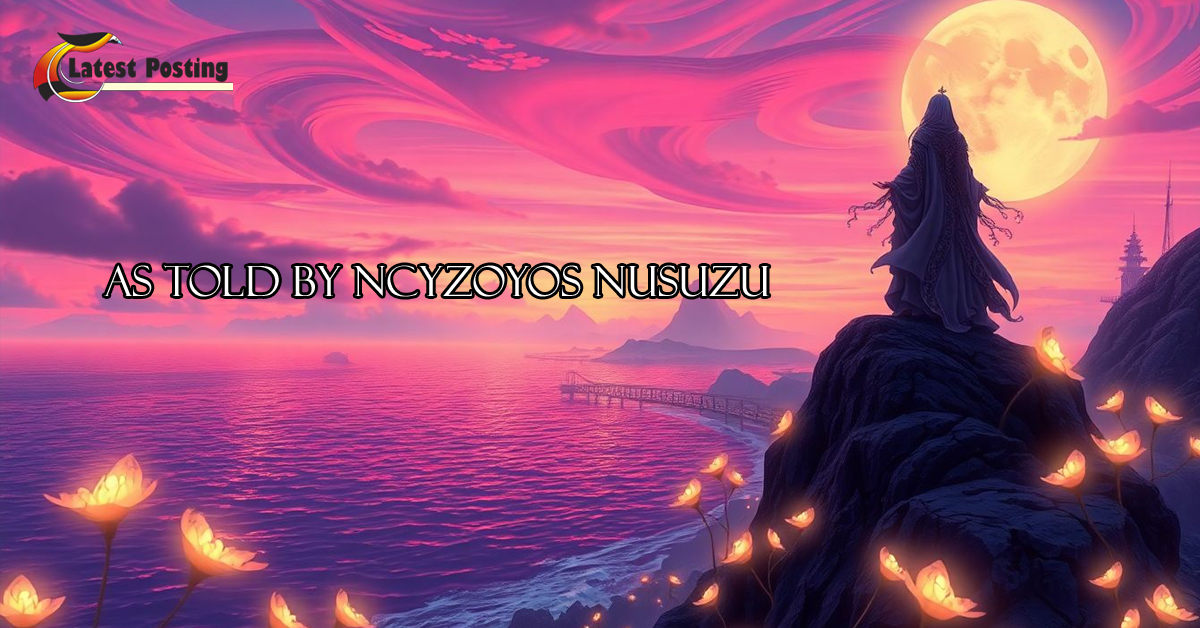The concept of the Enigmatic “Man Across the Sea” encapsulates tales that traverse both history and mythology. This figure often symbolizes adventure, transformation, and the crossing of cultural boundaries.
Exploring these narratives serves several purposes:
- Understanding Human Experience: Historical and mythological stories reveal our shared values and fears.
- Cultural Connections: Different cultures offer unique perspectives on this archetype, enriching our appreciation for diversity.
In this article, you will uncover:
- Biblical narratives that shape our understanding of liberation.
- The fascinating character of Maui from Polynesian mythology.
- Scottish water myths that caution against the unknown.
Through these explorations, we gain insight into how the Man Across the Sea continues to resonate in our lives today.

1. Biblical Narratives
Historical Context
The story of the Exodus, particularly the crossing of the Red Sea, is one of the most recognized narratives in the Bible. This tale recounts how Moses led the Israelites out of slavery in Egypt, culminating in a dramatic moment where he parts the sea with his staff, allowing them to escape from pursuit. The imagery is powerful, symbolizing liberation and divine intervention.
Yet, the historical accuracy of this account has been a matter of debate for centuries. Scholars have pointed out a notable absence of archaeological evidence to support the Exodus story as described in biblical texts. Sites that are believed to have played crucial roles in this narrative lack artifacts or records that would confirm such large-scale events took place during that period. This raises significant questions about our understanding of ancient history and its intertwining with religious beliefs.
Implications arise not just for historians but also for countless individuals whose faith hinges on these stories. If the Exodus did not occur as stated, what does that mean for the broader narrative of liberation and justice within religious contexts? For many believers, these stories serve as moral compasses, guiding principles that shape their views on freedom, faith, and perseverance. The lack of archaeological backing can create a sense of uncertainty about foundational beliefs.
In light of this historical inquiry, it becomes apparent that narratives like Moses’s crossing reflect more than mere events; they encapsulate cultural identities and collective memories. These stories continue to resonate across generations, illustrating themes of struggle against oppression and hope for deliverance.
This exploration into biblical narratives sets the stage for a broader understanding of how myths and histories interact across cultures.
Cultural Impact
The Crossing of the Red Sea story has significantly influenced Christian art and literature throughout history. This tale, where Moses leads the Israelites to freedom, symbolizes themes of liberation and divine intervention. Artists have depicted this dramatic moment in various forms, capturing the awe and power associated with Moses as a leader.
Key elements of its cultural impact include:
- Artistic Representations: From Renaissance paintings to modern illustrations, artists have portrayed Moses parting the Red Sea, emphasizing its significance.
- Literary References: The narrative appears in countless religious texts and stories, reinforcing its importance in moral teachings.
- Cultural Symbolism: The story resonates beyond religious contexts, representing hope and resilience in facing life’s challenges.
An illustration of Moses parting the Red Sea could serve as a powerful visual reminder of this enduring legacy. The themes from this narrative continue to echo in modern culture, influencing how we perceive courage and faith.
2. Polynesian Mythology
Maui, a beloved demigod in Polynesian mythology, embodies the spirit of adventure and ingenuity. His character is multifaceted, often portrayed as a trickster who uses his cleverness to navigate challenges and benefit humanity. The tales of Maui capture essential themes of bravery, resourcefulness, and the deep connection to nature that is prevalent in Polynesian culture.
Key Myths Involving Maui
Maui’s stories are rich with adventure, showcasing his incredible feats and magical abilities. Some significant myths include:
- The Magical Hook: One of Maui’s most famous attributes is his magical hook, known as the Manaiakalani. This hook allowed him to fish up islands from the ocean floor, showcasing not only his strength but also his role as a creator within the world.
- Raising the Sky: In another popular myth, Maui raises the sky to create more space for crops to grow. This act symbolizes his relationship with nature and highlights how he uses his powers for the benefit of his people.
- Slowing Down the Sun: One of Maui’s daring adventures involved catching the sun to slow its journey across the sky. By doing so, he provided longer days for people to work and enjoy life. This myth reflects not just his bravery but also a profound understanding of natural rhythms.
The importance of these tales extends beyond entertainment; they serve as vital elements of cultural identity in Polynesia. Maui’s adventures offer lessons about courage, cleverness, and respect for nature.
In Polynesian communities today, these stories continue to inspire younger generations, promoting values such as determination and community spirit. The legacy of Maui touches various aspects of life—from traditional storytelling practices to contemporary art forms.

The adventures of this demigod remind us that through creativity and bravery, one can bridge gaps between realms, embodying the very essence of what it means to be the Man Across the Sea.
3. Scottish Water Mythology
Scottish folklore is rich with enchanting tales of water spirits, particularly the Selkies and Kelpies. These shape-shifting creatures capture the imagination, embodying both beauty and danger.
Selkies: The Enigmatic Seal-Humans
Selkies are often depicted as seals that can shed their skins to become human. Their stories typically revolve around love and loss, where human interaction with these magical beings leads to both joyous unions and tragic separations. A common narrative involves a fisherman who captures a Selkie’s skin, forcing her to remain on land. Despite forming a family, the Selkie eventually longs for the sea, highlighting themes of longing and identity.
Kelpies: The Malevolent Water Horses
In contrast, Kelpies present a more sinister aspect of Scottish water mythology. These malevolent spirits take the form of horses, luring unsuspecting travelers to watery graves. Tales often describe Kelpies coaxing people onto their backs before plunging into deep waters. The transformation from an alluring creature to a deadly force emphasizes caution in interactions with nature.
Themes of Transformation and Danger
Both Selkies and Kelpies reflect deeper societal fears regarding water. The ability to transform signifies not only the allure of the unknown but also the potential for danger lurking beneath its surface. These myths serve as reminders of nature’s unpredictability, warning against naivety in human interactions with water.
“The sea is a treacherous friend,” one might say in reference to these tales. They echo the reality faced by communities dependent on fishing and travel across waters fraught with peril.
Cautionary Tales in Scottish Water Myths
The legends surrounding Selkies and Kelpies illustrate significant cautionary elements. They remind us that while water can be life-giving, it also holds dangers that must be respected.
- Transformation: Represents fluid identities and consequences of choices.
- Drowning Dangers: Reflects historical fears tied to maritime lifestyles.
- Human Interaction: Warns against taking nature lightly; respect is paramount.
These narratives resonate throughout history, shaping cultural understandings of water’s dual nature as both nurturing and perilous. The allure of mystery continues to captivate contemporary audiences, ensuring that these tales endure through generations.
4. Cultural Symbolism: The Ocean as Barrier and Bridge
The ocean holds a powerful symbolism across various cultures, often serving as both a barrier and a bridge. This duality reflects humanity’s complex relationship with the sea, representing adventure and exploration while also embodying fear and the unknown.
Ocean as a Barrier
Isolation from Other Worlds
Many cultures perceive the ocean as a vast expanse that separates societies. Myths often portray characters yearning to cross this formidable barrier, seeking new knowledge or connection.
Cautionary Tales
Stories such as those of Kelpies in Scottish folklore highlight dangers associated with water. These narratives warn against the perils of venturing too close to the unknown depths.
Ocean as a Bridge
Connection Between Cultures
The ocean also symbolizes unity, bridging gaps between different peoples. For instance, Polynesian navigators relied on their understanding of the stars and currents to explore vast distances, connecting islands and creating shared cultural ties.
Adventure and Discovery
Characters like Maui exemplify this spirit of exploration. His adventures resonate with themes of bravery, reflecting humanity’s innate desire to seek out new experiences and understand diverse landscapes.
Thematic Connections: Adventure Narratives Across Cultures
Comparative analysis reveals common themes found in mythology worldwide surrounding the “Man Across the Sea” concept:
- Transformation and Identity: Many myths involve characters who undergo significant change through their journeys across the sea. This theme signifies personal growth and discovery.
- Interaction with Nature: Stories often illustrate how characters engage with the ocean’s power, highlighting respect for nature’s majesty while navigating its challenges.
- Cultural Exchange: Myths frequently showcase encounters between different societies, emphasizing collaboration or conflict that arises from these interactions.
These elements weave together a rich tapestry of adventure narratives that underscore humanity’s ongoing fascination with the ocean—both as an isolating force and a connector of worlds. Through these stories, cultures share lessons about courage, transformation, and respect for nature’s mysteries.
Conclusion: The Enduring Legacy of the ‘Man Across the Sea’ Concept
The stories about the “Man Across the Sea” are powerful reflections of myths and history, showing how different cultures understand human experiences throughout time. These narratives not only connect us to our past but also shape our understanding of identity, adventure, and transformation.
Here are some key points to consider:
- Mythical Figures: Characters like Maui, Selkies, and Kelpies represent universal themes that resonate across various societies.
- Cultural Diversity: Different cultures add richness to these stories, providing diverse viewpoints on exploration and encounters with the unknown.
There is a sense of encouragement in exploring the vast ocean of mythology from various cultures. Each story offers valuable insights into human behavior and societal principles. By delving into these rich traditions, we can gain a better understanding of our shared heritage and the lessons that have been passed down through generations.





One thought on “The Enigmatic “Man Across the Sea”: A Journey into History and Mythology”